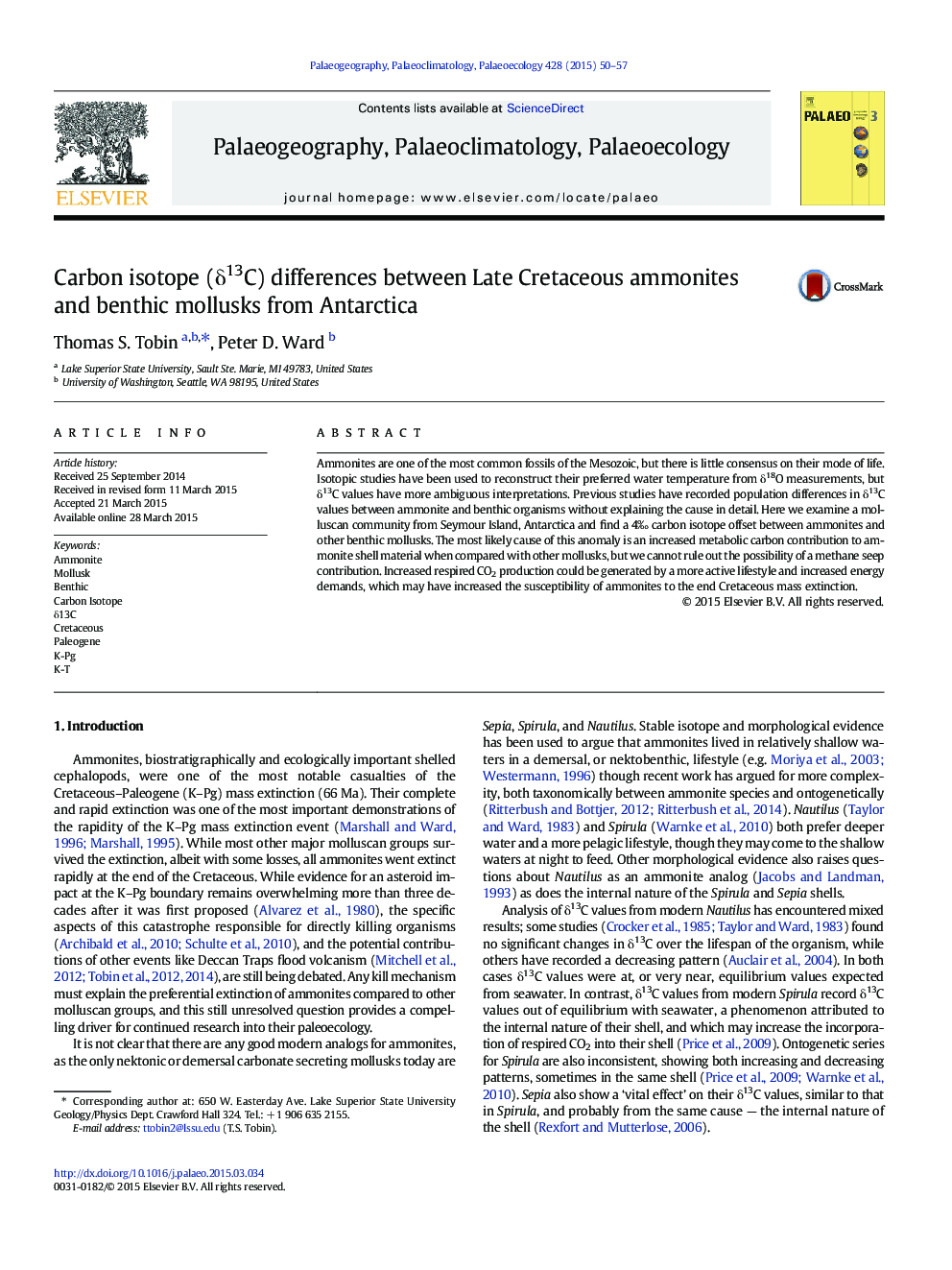| کد مقاله | کد نشریه | سال انتشار | مقاله انگلیسی | نسخه تمام متن |
|---|---|---|---|---|
| 4466011 | 1622162 | 2015 | 8 صفحه PDF | دانلود رایگان |

• Stable isotopic analyses were performed on ammonites and benthic mollusks.
• The two groups were found to have similar δ18O values.
• Ammonites had average δ13C values ~ 4‰ less than benthic mollusks.
• The δ13C anomaly is likely due to metabolic carbon contributions to shell building.
Ammonites are one of the most common fossils of the Mesozoic, but there is little consensus on their mode of life. Isotopic studies have been used to reconstruct their preferred water temperature from δ18O measurements, but δ13C values have more ambiguous interpretations. Previous studies have recorded population differences in δ13C values between ammonite and benthic organisms without explaining the cause in detail. Here we examine a molluscan community from Seymour Island, Antarctica and find a 4‰ carbon isotope offset between ammonites and other benthic mollusks. The most likely cause of this anomaly is an increased metabolic carbon contribution to ammonite shell material when compared with other mollusks, but we cannot rule out the possibility of a methane seep contribution. Increased respired CO2 production could be generated by a more active lifestyle and increased energy demands, which may have increased the susceptibility of ammonites to the end Cretaceous mass extinction.
Journal: Palaeogeography, Palaeoclimatology, Palaeoecology - Volume 428, 15 June 2015, Pages 50–57